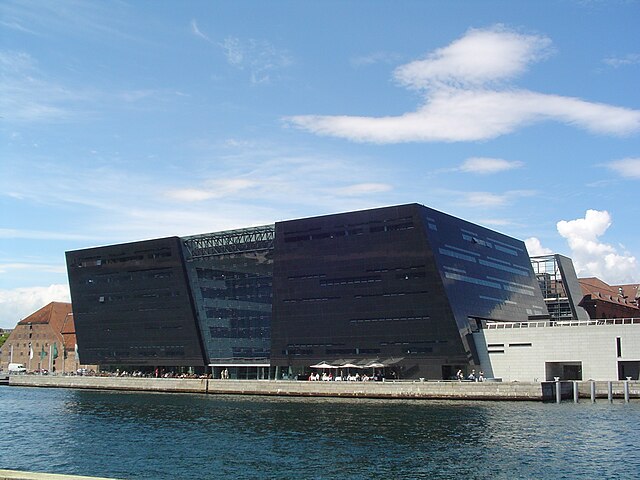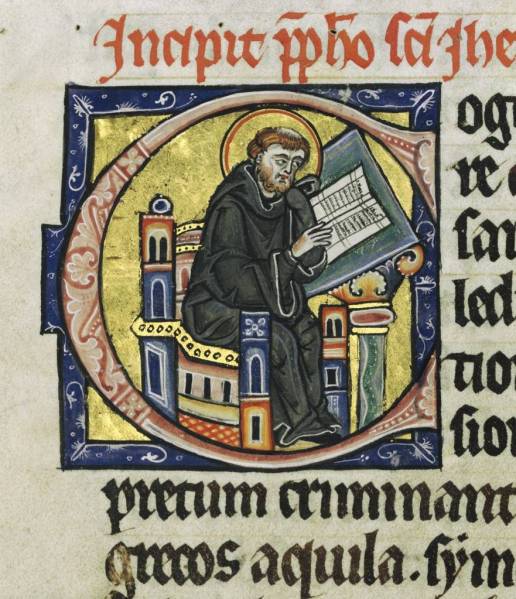
The Royal Library, Denmark
The Royal Library in Copenhagen is Denmark’s national library, also serving as the university library of the University of Copenhagen. It is the largest library in Scandinavia. It opened to the public in 1793, although the collection started to be gathered over a century before that. Today, the library is the result of the merging of the Royal Library with the Copenhagen University Library – founded in the 1400s – as well as the Danish National Library for Science and Medicine and the Danish Folklore Archive. The resulting collection is officially called The Royal Library, the National Library of Denmark, and the Copenhagen University Library. It contains over 35 million items, including more than six million books and journals and almost 20 million prints and photographs. There are also almost eight million pamphlets and corporate publications. Its digital collections occupy over 500,000 gigabytes. In 1999, a new library building opened, called the Black Diamond. It was designed by the Danish architectural firm schmidt hammer lassen. As the firm’s website notes:
The extension to the Royal Library is one of the most significant architectural landmarks on the Copenhagen waterfront. Open and essentially democratic, the building includes a café, bookshop, exhibition room, restaurant, scientific and literary institutions, as well as a roof terrace and a 600-seat hall for concerts, theatrical performances and conferences, along with six reading rooms with a total of 486 seats. The solid black cube is divided in two by a vast glazed atrium, housing the majority of its public functions. Clad in black granite, the extension to the Royal Library is known as the ‘Black Diamond’ – with its clean cut lines and glittering polished surfaces, the library is one of Copenhagen’s architectural gems… Situated in the historic heart of Copenhagen, the extension marks a radical shift from traditional library structure and accommodates a range of cultural facilities… The central space, affords panoramic views over the waterfront, and also serves as a significant source of daylight which is dispersed throughout the building. … The extension has doubled the library’s overall size – the open shelves can accommodate more than 200,000 books compared to the previous capacity of 45,000.

Covered in black marble and glass, the Black Diamond building contains an eight-story atrium with white, wave-shaped walls. Through the atrium’s external glass wall, visitors enjoy a view of the sea. Three bridges connect the Black Diamond with an older section of the Royal Library. Among the highlights of its collection are items listed in UNESCO’s Memory of the World Register. These include a large collection of books by and about Carl Linnaeus, the Swedish botanist, physician, and zoologist, who in the 1700s devised the system of naming organisms called binomial nomenclature. To biologists, Linnaeus is known as the father of modern taxonomy. The library also owns manuscripts and letters written in the 1800s by Hans Christian Andersen, a Danish author remembered for his children’s stories, including The Little Mermaid and The Ugly Duckling. There are also the Søren Kierkegaard Archives, preserving works by the Danish philosopher, theologian, poet, social critic and religious author who is considered to be the first existentialist philosopher. The collection possesses many precious illuminated books, including the Biblia Latina or the Hamburg Bible, created in the 1200s, with beautiful paintings inside the book. For the past thirty years, the library’s director general has been Erland Kolding Nielsen, formerly an associate professor at the University of Copenhagen’s Institute of Contemporary History. Dr. Nielsen also has experience teaching rhetoric. One of Dr. Nielsen’s key achievements has been to preside over the library’s digitization of its collections. In addition, he oversaw structural changes in the library, the most significant of which was the addition of the landmark Black Diamond. In August, Dr. Nielsen announced that he would be retiring in January 2017, when he reaches the age of seventy. He explained to his staff that he believes that although in Denmark there is no longer a mandatory retirement age, his colleagues “could not expect to continue in their posts unless they were able to work like 50-year-olds.”

Thailand and Denmark
As most Thais know, the Kingdom has a long history of exchange with Denmark, marked by a Treaty of Friendship between Denmark and Siam signed in Bangkok in 1859. The Danish-Thai Chamber of Commerce, as its website explains, is intended
to provide Danish-Thai companies with a stronger collective voice towards the Thai authorities but also to further promote and expand trade between Thailand and Denmark as well as establish a forum for networking among the Thai and Danish businessmen living here or traveling here on business.
The Chamber was founded in 1992. Its stated vision is
To facilitate business opportunities by optimizing synergies between Thai and Danish values and raising standards of socially responsible and environmentally sustainable business practices.
Among other examples of international cooperation and interaction are the Thai-Danish Club (TDC) and the Danish Women’s Network Thailand. The Danish Women’s Network was formerly known as the Margrethe Club, having received official permission from Her Majesty Queen Margrethe II of Denmark to name their organization in tribute to her. Its stated aim is
to maintain Danish traditions, serve to strengthen members’ social networks, exchange advice, and inspire lives in Thailand.
Founded in 1991, it assumed its updated name in 2003.
Business Cooperation
The Thai Danish Dairy Farm (TDDF) was a technology cooperation project between the Thai and Danish Governments launched in 1960. In 1971, the TDDF was transferred to the Thai government, granted the status of a state enterprise under the Ministry of Agriculture and Co-Operatives and renamed The Dairy Farming Promotion Organization of Thailand (DPO). Among other industries, in July Mr. Kabir Saluja, general manager of Carlsberg Thailand – The Carlsberg Group reintroduced its products to the Thai market in 2012 – stated:
Thailand is a very important market for the Carlsberg Group. The beer market is extremely large and Thai consumers enjoy all sorts of beers, from local brands like Leo to more expensive super-premium brands that you now see in upscale bars and restaurants…The Carlsberg Group will continue to invest in Thailand and we believe the alcohol and beer markets will start to show promising growth, especially in the super-premium beer segments. Our plans are to use our portfolio to gain leadership positions in these segments.

(All images courtesy of Wikimedia Commons)
